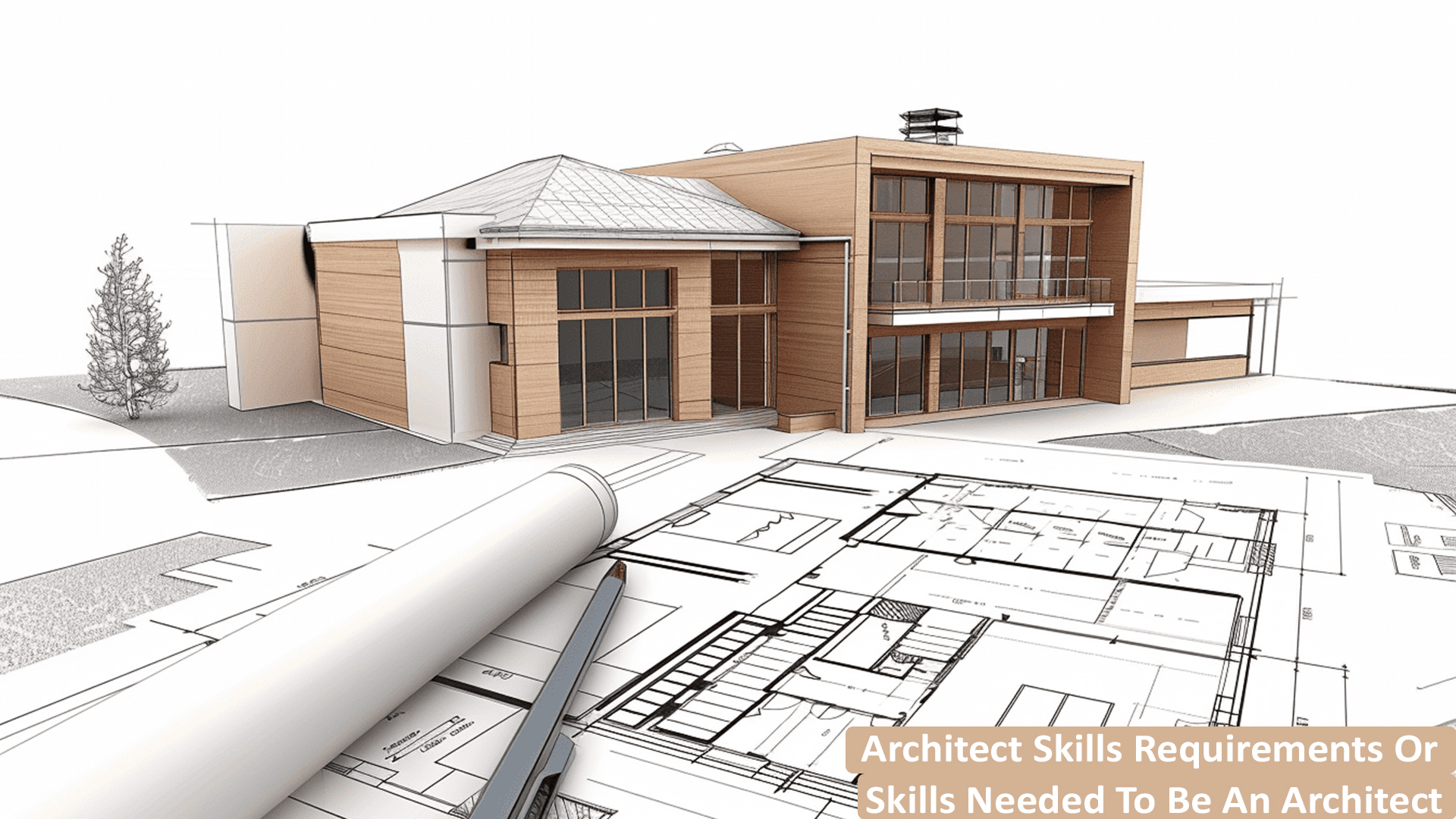Comprehending the Diverse Occupation Paths Available for Aspiring Architect
As an ambitious Architect, you have a globe of career courses waiting for you. Whether you're drawn to traditional design or the subtleties of lasting design, there's a particular niche that lines up with your interests.
Typical Design: Creating Frameworks and buildings
Conventional style concentrates on developing structures and structures that blend performance with visual allure. Your designs can reflect cultural heritage, showcasing neighborhood practices while meeting modern needs.
You'll create skills in drafting, model-making, and site evaluation, allowing you to envision and interact your concepts properly. Engaging with customers, you'll need to understand their vision and equate it right into viable styles.
Furthermore, constructing codes and sustainability methods are essential in your job, guaranteeing your frameworks are environmentally friendly and secure. As you grow in your career, you'll locate possibilities in domestic, business, or also reconstruction tasks, each offering distinct challenges. Welcoming typical design leads the way for a satisfying career that pays tribute to the past while shaping the future.
Urban Planning: Shaping Neighborhoods and Public Spaces
As a hopeful Architect, you can play an important role as a metropolitan coordinator, transforming just how communities connect and work. By employing neighborhood engagement methods, you'll assure that citizens have a voice fit their setting. Plus, integrating lasting design principles will certainly help produce areas that not just satisfy today's demands yet also safeguard the future.
Duty of Urban Planners
While lots of could assume of architects as the sole enthusiasts behind structures, city organizers play an essential duty in forming the wider landscape of areas and public spaces. They examine land use, zoning regulations, and neighborhood needs to develop lasting atmospheres that boost high quality of life. By teaming up with numerous stakeholders, you'll aid make parks, transport systems, and houses that advertise social communication and access. Urban coordinators additionally concentrate on ecological factors to consider, making sure that growths incorporate eco-friendly rooms and support biodiversity. Your competence in spatial layout and community dynamics permits you to visualize future development while maintaining cultural heritage. In this essential function, you'll directly influence just how individuals experience their surroundings, making every project a possibility for favorable change.
Community Involvement Techniques
Effective neighborhood engagement techniques are essential for urban planners to guarantee that the voices of citizens are heard and valued in the preparation procedure. To cultivate purposeful dialogue, you ought to focus on open forums and workshops where area participants can share their ideas and issues. By actively paying attention and incorporating responses, you'll produce areas that show the community's needs, inevitably leading to more effective and lasting urban atmospheres.
Lasting Style Concepts
When creating city rooms, integrating lasting layout principles is vital for developing environments that flourish both environmentally and socially. Take into consideration integrating green spaces, like parks and yards, to boost biodiversity and boost air top quality.
Designing with water preservation in mind is additionally crucial-- consider rain yards and permeable surface areas to manage stormwater. Involving area participants during the preparation process warranties that the areas you produce satisfy their requirements and encourage social communication. By welcoming these principles, you'll add to lively, sustainable urban landscapes that benefit everyone.

Landscape Style: Creating Sustainable Outside Environments
As you discover landscape style, you'll uncover necessary design concepts that produce functional and lovely exterior spaces. Lasting practices play a vital duty in ensuring these environments flourish while decreasing environmental impact. And also, you'll find a range of career possibilities that enable you to make a real difference in how individuals interact with nature.
Style Concepts in Landscape
Understanding style concepts in landscape style is crucial for developing sustainable outdoor environments that integrate with nature. You'll need to ponder components like balance, scale, and proportion to assure your designs feel natural and inviting. Including indigenous plants not only enhances biodiversity but likewise lowers water use, making your landscape durable. Believe regarding the circulation of space and how individuals connect with it; pathways and seating areas ought to welcome expedition and leisure. Furthermore, pay attention to seasonal modifications, making with materials that enhance the surroundings year-round (Architect). By focusing on sustainability and appearances, you can develop outside rooms that improve the neighborhood and promote health. Welcoming these concepts will set a solid structure for your occupation in landscape architecture.
Sustainable Practices Overview
Sustainable practices in landscape architecture not only concentrate on aesthetics yet also focus on ecological health and wellness and source preservation. By integrating indigenous plants, you boost biodiversity and reduce the need for chemical plant foods and pesticides. Implementing reliable watering systems helps conserve water and lessens runoff, safeguarding web link neighboring communities. You can create areas that advertise this article soil wellness, such as exercising and utilizing organic materials permaculture principles. In addition, including environment-friendly framework, like rainfall gardens and porous pavements, help in stormwater management and lowers urban warmth. When you develop outdoor environments with sustainability in mind, you add to a healthier planet and provide rooms that foster area link. Inevitably, these techniques ensure your layouts profit both people and the atmosphere for several years ahead.
Occupation Opportunities Expedition
With a strong structure in sustainable practices, landscape architecture provides a variety of career paths that allow you to make a meaningful impact on the environment. Urban coordinators often collaborate with landscape designers to create environment-friendly areas in urban settings, enhancing city livability. If you're enthusiastic about education and learning, consider becoming a landscape style educator, motivating future generations.
Lasting Style: Concentrating on Eco-Friendly Practices
As you explore your profession in design, welcoming green methods can set you apart in a competitive area. Sustainable design concentrates on producing structures that decrease environmental influence while improving occupant well-being. By including renewable materials, energy-efficient systems, and lasting structure methods, you'll add to a greener future.
Begin by acquiring knowledge of environment-friendly qualifications like LEED or BREEAM, which can bolster your credentials. Think about just how natural light, air flow, and thermal performance can enhance style. Collaborate with engineers and ecological consultants to introduce remedies that reduce waste and conserve resources.
Do not forget the relevance of area involvement-- interesting local stakeholders can motivate layouts that balance with the environment. As clients significantly focus on sustainability, your proficiency in green techniques will not only bring in projects but additionally satisfy your enthusiasm for liable architecture. Welcome this vital aspect of the profession, and see your profession flourish.
Historic Preservation: Shielding and Restoring Cultural Heritage
While you start on your architectural trip, consider the essential function of historic conservation in preserving our social heritage. This area concentrates on the security and remediation of considerable buildings, sites, and frameworks that tell the stories of our past. By involving in historic conservation, you'll help secure the building heritage that forms neighborhood identity.
As a historic preservation Architect, you'll assess historic importance and examine the problem of structures. You'll work closely with historians and conservationists to assure authentic remediation techniques are utilized. This job course permits you to blend imagination with study, allowing you to create services that appreciate initial materials and craftsmanship.
Your job not just contributes to sustainability by reusing visit the site existing structures however likewise fosters a sense of satisfaction within areas. Embracing this path will certainly aid you end up being a guardian of history, protecting the tales and visual appeals that improve our lives.
Interior Style: Enhancing Indoor Spaces
Historic conservation and indoor design both share a dedication to enhancing the constructed atmosphere, but they concentrate on different facets. While historical conservation highlights keeping a framework's historic and cultural value, indoor architecture nos in on enhancing indoor rooms for functionality and aesthetic appeals.
As an ambitious Architect, you'll find that indoor style enables you to blend imagination with technological abilities. You'll make rooms that not only look excellent but also advertise comfort and efficiency. This field includes understanding just how light, color, and products interact within a room, affecting state of mind and use.
You'll function on various jobs, from property homes to industrial workplaces, making certain that each atmosphere satisfies the requirements of its passengers. By prioritizing individual experience, you can change insides right into practical and motivating rooms, making a considerable influence on exactly how individuals connect with their environments. Embrace the opportunity to boost interior settings and shape the means people work and live.
Industrial Layout: Combining Performance With Appearances
Industrial design plays a vital duty in producing products that flawlessly blend looks with functionality, making sure that what you use everyday is not just aesthetically attractive however also practical. As an ambitious Architect, you might engage on your own in this field, concentrating on making everything from furniture to consumer electronics. Your job includes comprehending user needs, materials, and manufacturing procedures, enabling you to produce innovative solutions that improve daily experiences.
In commercial layout, you'll frequently team up with marketing experts, manufacturers, and engineers, making sure that your layouts are not only stunning yet likewise possible. You'll discover to stabilize form and feature, prioritizing usability without compromising style. By refining your skills in laying out, 3D modeling, and prototyping, you'll be fully equipped to bring your ideas to life. This profession course offers a vibrant setting where imagination fulfills usefulness, making it a rewarding selection for architects thinking about shaping the products of tomorrow.
Often Asked Questions
What Educational Accreditations Do I Need to End Up Being an Architect?
To come to be an architect, you'll need a professional level in style, typically a Bachelor's or Master's. In addition, you'll have to finish an internship and pass the Architect Registration Examination to exercise lawfully.
Are There Qualification Requirements for Different Building Career Paths?
Yes, there're accreditation demands for different architectural paths. Architect. You'll need to pass examinations, complete teaching fellowships, and in some cases pursue specialized training, relying on your chosen focus, like landscape design, city style, or historical conservation
What Software Skills Are Important for Designers Today?

Just How Can I Gain Practical Experience While Researching Style?
You can obtain sensible experience by interning at building firms, joining layout competitions, offering for neighborhood tasks, or teaming up with schoolmates on real-world projects. These opportunities boost your skills and build important connections in the industry.
What Work Opportunities Exist Outdoors Conventional Architecture Firms?
You can explore various task chances outside conventional design firms, like city preparation, interior style, landscape style, building and construction administration, property advancement, or perhaps duties in sustainability consulting. Each offers special obstacles and benefits.
Whether you're attracted to standard architecture or the nuances of lasting layout, there's a specific niche that lines up with your interests.When developing urban rooms, including sustainable style concepts is crucial for producing environments that flourish both environmentally and socially.As you explore landscape style, you'll discover important style principles that develop gorgeous and practical outdoor rooms.Understanding style concepts in landscape style is essential for creating sustainable outdoor settings that balance with nature.In commercial layout, you'll frequently work together with suppliers, marketing professionals, and engineers, guaranteeing that your designs are not just beautiful yet additionally practical.